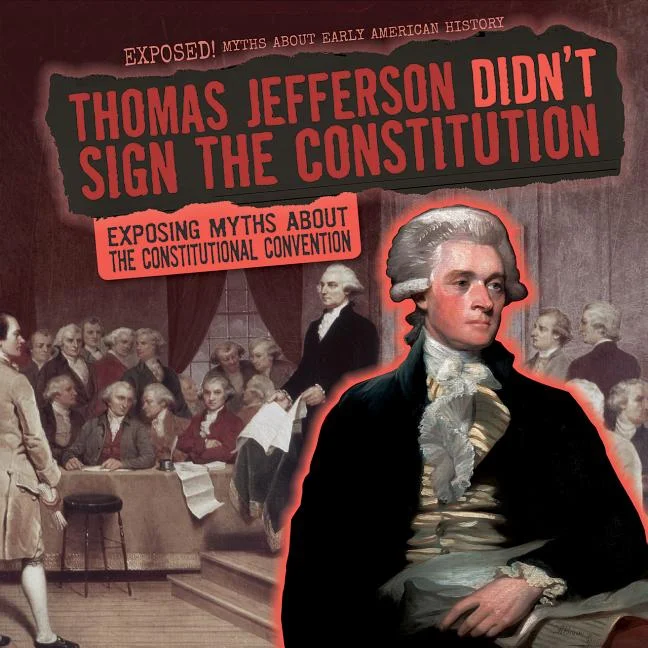On March 4, 1809, James Madison was inaugurated as the fourth president of the United States. At 57 years old, Madison’s rise to the presidency seemed inevitable. He had been Thomas Jefferson’s right-hand man for years, a key figure in the Republican Party, and the intellectual force behind the U.S. Constitution. Yet, at the time, his succession wasn’t as obvious as it might seem today.
First, Jefferson didn’t have to step down. The Constitution did not yet limit presidents to two terms. After securing the Louisiana Purchase, Jefferson’s popularity was soaring, and many wished for him to remain in office indefinitely. However, Jefferson had already decided early in his second term to follow George Washington’s precedent of voluntary retirement. He wisely recognized that stepping down after two terms would solidify the tradition of a peaceful transfer of power and preserve his legacy. Another term could have jeopardized both.

Second, Madison wasn’t the only contender for the Republican nomination. Southern Republicans favored James Monroe, while Northern Republicans backed Vice President George Clinton. Although neither posed a significant challenge, their presence indicated a growing divide within the party. Madison’s political dominance was not as unquestionable as Jefferson’s had been in 1800.
Beyond politics, Madison himself seemed an unlikely leader. The previous Virginia presidents—Washington, Jefferson, John Marshall, and Monroe—were all tall, commanding figures, towering over their contemporaries. Madison, by contrast, stood at just 5’4” (1.6 meters) and was frail, weighing under 100 pounds (45 kg). His sickly appearance and reserved nature made him an odd successor to the grand, charismatic Virginians before him. However, if the presidency were determined by intellect rather than physical presence, Madison was unquestionably qualified. As the chief architect of the Constitution, he possessed an unparalleled understanding of governance. But political acumen did not necessarily translate to presidential success.
One of the most defining aspects of Madison’s presidency wasn’t his policies or his leadership—it was his wife, Dolley Madison. If James was unassuming and introverted, Dolley was his complete opposite: vibrant, charming, and universally adored. After eight years of Jefferson’s bachelor presidency, the White House was in dire need of a hostess, and Dolley stepped into the role with unmatched grace. She transformed the executive mansion into the center of Washington’s social life, hosting lavish parties, drawing both allies and rivals into her circle, and softening political tensions with her charm.
Dolley was no ordinary First Lady. Though the title wasn’t officially used at the time, she is widely regarded as the first to define the role. Unlike Martha Washington, who embodied the quiet dignity of a Revolutionary War wife, Dolley was a political force in her own right. She made sure her husband looked good—figuratively, at least—and created an atmosphere where even his opponents felt at ease. While Madison was deliberate and reserved, Dolley made the White House warm, welcoming, and politically advantageous. Her influence was so profound that people often referred to her as the “Queen of Washington.”
Madison’s presidency, however, was not all glittering parties and political maneuvering. His attempts to establish a cooperative relationship with Congress backfired. Unlike Washington or Jefferson, who were willing to battle Congress for their decisions, Madison’s more conciliatory approach made him appear weak. His choice for Secretary of State, Albert Gallatin, was blocked by radical Republicans, and instead, Madison had to settle for Robert Smith—a man more famous for being the brother of a congressman than for any political or diplomatic skill. This left Madison essentially acting as his own Secretary of State. His cabinet selections for the War and Navy Departments were similarly unimpressive, chosen more for political appeasement than competence. This would have dire consequences when the country was unexpectedly thrust into war.
Yet, in the realm of law and governance, Madison excelled. As the “Father of the Constitution,” he had an intimate understanding of its workings. Unlike Jefferson, who had frequently clashed with the judiciary, Madison sought to restore balance between the branches of government. His presidency marked a high point for judicial independence, largely due to his collaboration with Chief Justice John Marshall. While Jefferson had tried to weaken the courts, Madison recognized their importance in maintaining a stable government. His most significant judicial appointment, Joseph Story, would become one of the most influential legal minds in U.S. history. Story, despite being a Republican appointee, turned into a staunch advocate of Federalist legal principles. His legal writings shaped American jurisprudence, and one of his landmark cases even inspired a Steven Spielberg movie (can you guess which one?).
Madison also demonstrated his constitutional commitment in a surprising way—by wielding his first presidential veto. In 1811, Congress passed a bill supporting a Christian charitable organization in Alexandria, Virginia, which aimed to provide aid to the poor and disabled. While this seemed like an innocuous act, Madison saw it differently. The First Amendment explicitly prohibited government establishment of religion, and in his view, supporting a religious charity—even for noble reasons—violated this principle. His veto was a firm stand for the separation of church and state, reinforcing a legal precedent that remains foundational in U.S. law.
Madison’s presidency is often remembered for the War of 1812, a conflict that he arguably stumbled into due to his initial hesitancy in foreign policy. His military unpreparedness and indecisive leadership at the war’s outset were serious missteps. Yet, by the war’s end, the United States had secured its sovereignty and a renewed sense of national pride. And through it all, Dolley Madison became an enduring symbol of American resilience—famously saving a portrait of George Washington from the burning White House as British troops approached.
While Madison may not have been the most dynamic leader, his contributions to American democracy were profound. His presidency solidified judicial independence, reinforced the separation of church and state, and, despite its rocky start, helped shape America’s role on the world stage. And, thanks to Dolley, he left the White House far more beloved than he had entered it.

No comments yet.